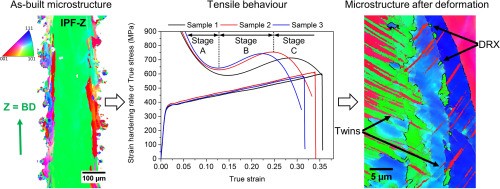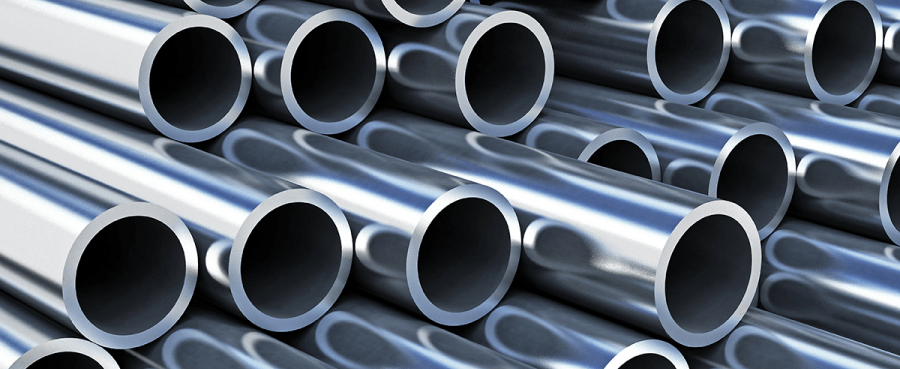Stainless steel comes in various classifications depending on the amount and type of alloying elements. Austenitic stainless steels are unique in that they have exceptional corrosion resistance and maintain high strength, toughness and formability over a wide range of temperatures. Microscopically, they have a face-centered cubic structure and in the case of a single crystalline specimen, they contain no grain boundaries.
In a recent article published in Scripta Materialia, Ph.D. candidate Xianglong Wang from McGill University experimented with single crystalline austenitic stainless steel in the form of thin steel struts.
“Single crystalline austenitic stainless steel struts with a diameter of 250 μm were successfully fabricated using laser powder bed fusion (LPBF). The mechanical properties of the struts were evaluated by a CellScale UniVert uniaxial testing machine. Excellent strength-ductility combination has been found for these single crystalline struts over their polycrystalline counterparts. By further combining the interrupted tensile testing on the CellScale Univert machine and post-deformation microstructure analysis, the deformation mechanism of the single crystalline struts has been confirmed and the unique dynamic recrystallization phenomenon has also been discovered.”

Read the full journal article here: https://doi.org/10.1016/j.biomaterials.2018.12.009
Read all other publications here: https://www.cellscale.com/publications/
Check out another user publication highlight, this time about 3D bioprinting of human tissue with dECM. Click here.








